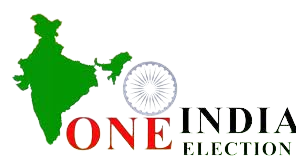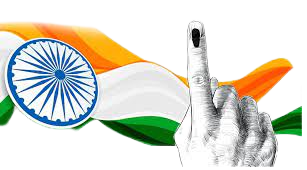Simultaneous Elections//एक साथ चुनाव करना क्या संभव है
Context- Simultaneous Elections Recently, the issue of holding simultaneous parliamentary and Assembly polls has been referred to the Law Commission so that a practicable roadmap and framework can be worked out.
Simultaneous Elections
Background
- Simultaneous Elections Simultaneous polls to states and Lok Sabha is not a new norm. In fact, simultaneous elections have previously been conducted in India in 1952, 1957, 1962 and 1967. Soon after, this norm was discontinued following the dissolution of some Legislative Assemblies between 1968 -69.
- The idea of reverting to simultaneous polls was mooted in the annual report of the Election Commission in 1983.
- The Law Commission’s Report also referred to it in 1999.
- The BJP government, after coming to power in 2014, had put forward a strong pitch for the conduct of simultaneous elections in the country.
- In 2018, the Law Commission submitted a draft report endorsing the implementation of simultaneous polls, recommending changes to the electoral laws and Articles pertaining to the same. It examined legal and constitutional constraints and solutions related to the conduct of simultaneous elections. The Law Commission has suggested that simultaneous elections can only be held through appropriate amendments to the Constitution. The Commission further opined that at least 50% of the states must ratify the constitutional amendments.
Simultaneous Elections//एक साथ चुनाव करना क्या संभव है
What is ‘One Nation One Election’ (ONOE) system?
- The current electoral system of the country holds separate polls for the Lok Sabha and State assemblies with a gap of five years, i.e., when the tenure of the Lower House or the state government concludes, or either of them is dissolved prematurely.
- The term of state assemblies may not necessarily be in sync with one another or that of the Lok Sabha. As a result, the mammoth task of conducting elections goes all round the year.
- One Nation One Election proposes that simultaneous elections be held in all states and the Lok Sabha in a gap of five years. This will involve the restructuring of the Indian election cycle in a manner that elections to the states and the centre synchronise. This would mean that the voters will cast their vote for electing members of the LS and the state assemblies on a single day, at the same time (or in a phased manner as the case may be).
Simultaneous Elections//एक साथ चुनाव करना क्या संभव है
Implementation/ Important Articles
- For simultaneous polls, there has to be a political consensus pertaining to the changes in the electoral system. Furthermore, amendments to the Constitution need to be formulated.
- Few of the important Articles that need to be amended for implementation of ‘one nation one election’ are:
- Article 172 and Article 83 deal with the duration of the Houses of Parliament and guarantee a five-year term to both the elected Lok Sabha and state assemblies, unless they are dissolved sooner.
- Article 85 of the Indian Constitution deals with the powers of the President to summon Parliamentary sessions, not exceeding a gap of more than six months.
- The President also carries the power to adjourn either House of the Parliament and the dissolution of the Lok Sabha.
- Article 356 of the Indian Constitution comes into action in case of governance and constitutional failure in a state and deals with the President’ Rule.
- Amendments in the People’s Representation Act, 1951(RPA Act 1951) and the Anti Defection Law must be made for organised conduct and stability in both Lok Sabha and state assemblies.
Simultaneous Elections//एक साथ चुनाव करना क्या संभव है
Arguments in favour of Simultaneous Elections/ ONOE
- Reduction in cost: Multiple elections at different times lead to a huge cost to the exchequer in the form of lost time, labour, and financial costs. There are significant costs involved in the conducting of elections including the movement of security personnel, diversion of state machinery towards presiding over the elections and other similar costs.
- Simultaneous polls will boost voter turnout.
- Engagement of security forces: Deployment of security forces is normally throughout the elections and frequent elections take away a portion of such armed police force which could otherwise be better deployed for other internal security purposes.
Shortage of Judges//
-
Simultaneous Elections
Impact on social fabric: Frequent elections perpetuate caste, religion, and communal issues across the country as elections are polarising events that have accentuated casteism, communalism, and corruption.
- Focus on populist measures: Frequent elections will impact the focus of governance and policymaking as it forces the political class to typically think in terms of immediate electoral gains rather than focus on long-term programs and policies.
- Regular elections hamper the delivery of essential services due to the engagement of public servants, including a large number of teachers, in the election process.
- Hampering values of democracy: smaller parties with less capital and money for election expenditure could not compete equally with larger parties with deep pockets. This hampers equity and equality in a democratic process. With simultaneous elections, the election expense will be reduced thus allowing for more level playing field during the campaign times.
Simultaneous Elections//एक साथ चुनाव करना क्या संभव है
Arguments Against
- The primary cause of concern amongst parties that have opposed simultaneous polling is that of Constitutional glitches and anti-federal consequences. Some believe that this shall impact the voting judgement of the people and this new process shall require manpower and machinery (EVMs and VVPATs) on a humongous scale.
- The Opposition parties had argued that such deliberations will adversely affect the federal nature of the Indian political system. National issues and State issues are different in nature and implementation. The national election is dominated by issues about national interests, while state elections deal with local issues. With simultaneous elections, national issues may dominate state issues.
- Accountability: Again, regular elections mean that the government is under an obligation to listen to the will of the people lest it loses the elections in one state or the other. However, if the government is assured of a fixed tenure without any fear of recall, it might lead to autocratic tendencies, where the ministers exercise their powers, at least initially, as per their whims and fancies, and conduct political welfare in the latter part of the tenure to influence the voters.
Law Commission of India//22 विधि आयोग की समीक्षा
-
Simultaneous Elections
Difficult to Maintain Synchronisation: It is difficult to maintain simultaneous elections in a democracy. Even if we can achieve simultaneous elections at the Centre and in all states by prolonging and shortening the tenures of the Lok Sabha and the respective State assemblies, it would be difficult to maintain such a situation for long. As soon as any government loses confidence in its assembly, again the system will fall into disarray.
- Tampering democratic will. The present system has been consciously chosen by our forefathers to uphold the will of democracy by providing for regular elections so that people can express their will through the right to vote. However, modifying the election system would mean tampering with the power of people to express their democratic will.
-
Simultaneous Elections//एक साथ चुनाव करना क्या संभव है
Simultaneous election is an idea whose time has come. However, since the issue is concerned with the federal structure of the Constitution, it needs to be discussed and debated properly across the political spectrum to assuage the concerns of regional parties. This will make it easier to implement the idea in the country.
-
Simultaneous Elections
Ideally, the ‘one nation, one election’ system should reduce the amount of time, energy and resources invested in the conduct of polls. If simultaneous polls do reduce the duration of conducting polls, political parties will have ample time to address national issues and enhance governance.
- The law commission’s recommendations suggest that there is a feasibility to restore one nation one election concept as it existed during the first two decades of India’s independence. RELETEDLINKS
FIGHTING CANCER// कैंसर से लड़ाई
क्रेडिट कार्ड सम्बंधित A to Z जानकारी


